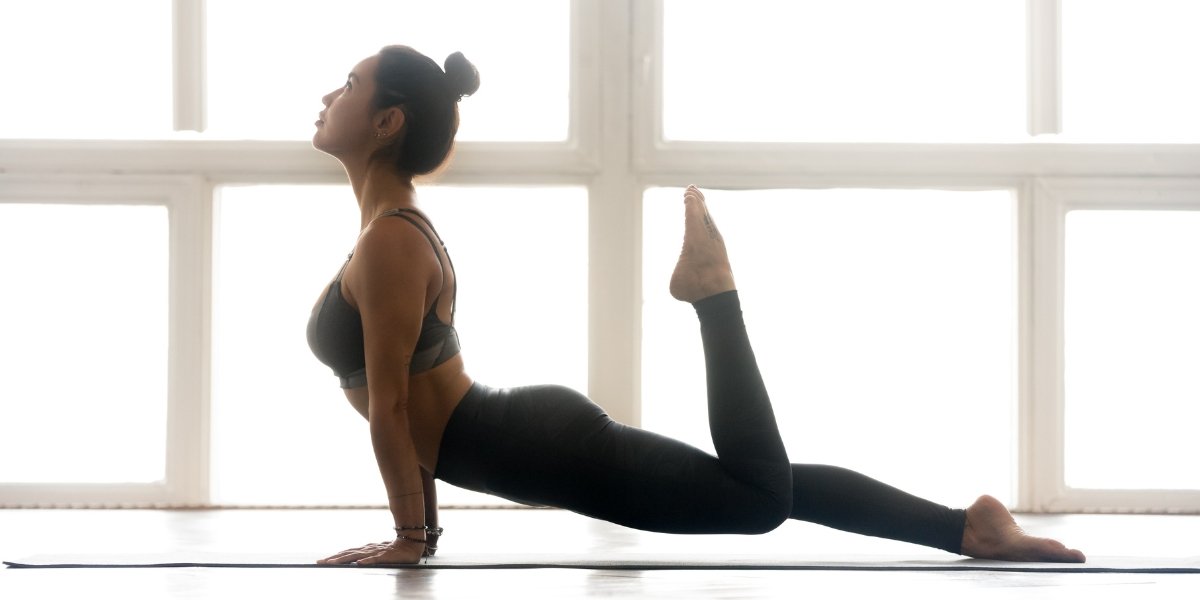Is Pilates Good for Posture? (5 Ways Pilates Improves Posture)
Are you tired of slouching at your desk or feeling discomfort due to poor posture? If you're wondering whether Pilates is good for posture and can help improve your posture and overall well-being, you're not alone.
This comprehensive article will delve into the transformative power of Pilates in enhancing spinal alignment, strengthening core muscles, and promoting body awareness.
Explore the five key ways Pilates can help you achieve a healthier and more upright stance. Keep reading to discover the secrets of better posture with Pilates!
Why Maintaining Good Posture Is So Important
Good posture is important for our overall health and well-being. It reduces the risk of injury and provides a foundation for proper movement. Proper alignment of the spine also enhances respiratory function and aids digestion.
Additionally, good posture has a positive impact on mental well-being. It promotes spine health by reducing the risk of spinal deformities and unnecessary wear and tear on spinal discs and joints.
Maintaining correct posture allows for optimal musculoskeletal functioning and safeguards the key nerves that pass through the spinal column.
Incorporating practices such as Pilates into our daily routine can play a significant role in achieving and sustaining good posture.
Common Causes of Poor Posture
Poor posture is becoming increasingly common due to modern sedentary lifestyles. Common causes include prolonged sitting, excessive use of electronic devices, poor ergonomics, muscle weakness or imbalance, and stress.
Recognizing these causes is crucial for intervention to address posture-related issues and improve overall well-being.
Is Pilates Good for Posture?
Pilates is an exercise regimen that can improve posture by enhancing spinal alignment, strengthening core muscles, addressing shoulder and neck alignment concerns, building a stronger lower back, and promoting overall body awareness.
Regular practice of Pilates cultivates mindfulness and conscious control over movement patterns, allowing individuals to identify and correct postural imbalances.
By integrating the principles of good posture into daily routines, individuals can achieve a healthier and more upright stance.
How Pilates Helps With Posture Correction
Pilates effectively corrects poor posture through core strength, flexibility, and body alignment. It strengthens the deep abdominal muscles, promotes spinal alignment, aligns the shoulders and neck, and builds a stronger lower back.
Developing overall body awareness is another aspect of posture improvement through Pilates. By practicing regularly, individuals can experience significant improvements in their posture and overall well-being.
5 Key Ways Pilates Can Improve Your Posture
#1) Enhanced Spinal Alignment
Pilates effectively improves spinal alignment by engaging the deep core muscles that support and stabilize the spine. Pilates exercises target the cervical, thoracic, and lumbar regions, correcting imbalances caused by poor posture.
Practitioners are encouraged to elongate their spine and engage their core muscles, retraining muscle memory over time for good posture.
Consistent Pilates practice with a strong focus on spinal alignment can lead to a stronger, more aligned spine, improving musculoskeletal health and reducing the risk of injury.
#2) Strengthening Core Muscles for Posture Support
Pilates effectively strengthens the core muscles, consisting of the deep abdominal, pelvic floor, and spinal muscles.
Through targeted exercises, Pilates engages these core muscles in a unique way, developing strength and endurance in the deepest layers of abdominal muscles.
Strengthening the core muscles through Pilates improves posture support, reduces the likelihood of slouching or poor posture habits, and sets Pilates apart from other exercise modalities.
#3) Shoulder and Neck Alignment
Good posture is important for proper alignment of the neck and shoulders. Pilates exercises can target muscles responsible for alignment.
Strengthening exercises, such as scapula placement, shoulder rolls, and scapular protraction/retraction, can activate and strengthen these muscles.
Pilates also includes stretching techniques to promote flexibility. Proper alignment is emphasized throughout all exercises, promoting a neutral spine position with relaxed shoulders and a lifted chest. This awareness carries over into everyday activities, making people more mindful of their shoulder and neck posture over time.
#4) Building a Stronger Lower Back
Pilates can help build a stronger lower back and improve your posture. It offers a range of exercises designed to target and strengthen the muscles in this area.
Pilates also includes specific spinal articulation and mobility techniques to increase flexibility and strength.
By consistently practicing Pilates exercises that target the lower back area, you can gradually build up strength and endurance in this crucial region of your body, improving your overall posture and reducing pain or discomfort.
It's important to consult with a certified instructor to ensure proper form and technique.
#5) Improving Overall Body Awareness and Posture
Pilates is a great way to improve overall body awareness and posture. It involves exercises that encourage individuals to become more attuned to their bodies and identify imbalances and areas of tension.
Pilates strengthens specific muscle groups responsible for maintaining good posture, including the core muscles, shoulder and neck alignment.
It also challenges individuals to control their bodies precisely, enhancing coordination and proprioception skills.
Consistently practicing Pilates can retrain the body's natural movement and alignment patterns, leading to long-lasting benefits.
Integrating Pilates into Your Daily Routine for Better Posture
When asking if Pilates is good for posture, consistency is key. Incorporating Pilates into your daily routine can greatly enhance the benefits and help you achieve a healthier posture. Allocate a dedicated time slot and create a regular routine.
Before starting, ensure a suitable space. Begin with gentle stretching, target muscle groups with Pilates exercises, and focus on slow, controlled movements and proper alignment.
Gradually increase intensity and consult with a qualified Pilates instructor or physical therapist.
Emphasize the mind-body connection by focusing on deep breathing. Pilates can become an essential part of your journey towards a healthier posture.
How Customized Pilates Plans Can Improve Your Posture
Customized Pilates plans can significantly improve your posture by addressing specific postural imbalances, strengthening core muscles, targeting the shoulder girdle and neck region, building strength in the lower back, and cultivating overall body awareness through movement education.
With the guidance of a skilled instructor, you can embark on a transformative journey towards better posture and a healthier body.
Conclusion: Embracing Pilates for a Healthier Posture
Pilates can have long-lasting positive effects on your overall well-being. But is Pilates good for posture? The answer seems to be a clear and resounding ‘Yes!’
It offers targeted exercises to correct alignment, which leads to better spinal alignment, stronger core muscles, improved shoulder and neck alignment, a stronger lower back, and heightened body awareness.
Integrating Pilates into your daily routine can yield significant results by dedicating a few sessions per week to practicing Pilates exercises specifically designed for posture improvement.
You can gradually witness the transformation in your body's alignment and how you carry yourself.
Working with trained professionals or instructors can further enhance the effectiveness of your posture correction journey. Customizing your Pilates plan can help you achieve better results.
Embracing Pilates for better posture improves your physical health and has psychological benefits. When you stand tall with good posture, you project confidence and self-assurance. This not only positively impacts your interactions with others but also boosts your own self-esteem and overall mood.
Begin your journey towards achieving a healthier posture by incorporating Pilates into your life. With dedication and consistency, you can witness this practice's transformative power on your physical appearance and inner well-being.
Embracing Pilates is embracing a path to improved mobility, better posture, and a healthier, more balanced lifestyle.
Transform your fitness journey with private 1x1 Pilates in New York. At The Pilates Circuit, we specialize in personalized one-on-one training tailored to your unique goals. Whether you're improving posture, building strength, or enhancing mobility, our expert instructors are here to guide you every step of the way.
Book an intro session to experience how targeted training can make a difference in your life. Choose from our Chelsea Private Pilates Studio or NOMAD Pilates Studio for a welcoming and focused environment.
FAQs
-
The frequency of practice depends on your goals, schedule, and fitness level. Generally, aim for a couple sessions per week to see noticeable improvements in strength, flexibility, and overall body awareness.
However, even practicing Pilates once a week can still provide benefits, especially when combined with other forms of exercise.
-
Yes, there are various types of Pilates, including Mat Pilates, Reformer Pilates, and Clinical Pilates. Each type may focus on different aspects of Pilates principles and utilize different equipment or props.
When choosing the right type of Pilates for you, it’s worth exploring different instructors and styles to see what you enjoy the most.
At TPC, we offer athletic Contemporary Reformer Pilates, which is perfect for improving form and function while still getting a good workout. There are also slower, more restorative branches of Pilates. It’s all about finding the style that you gel with.
-
Feeling sore after a Pilates workout can vary depending on your fitness level, the intensity of the workout, and the specific exercises performed.
While some muscle soreness can be normal, especially if you're challenging your body with new movements, it shouldn't be excessive or debilitating. If you're experiencing severe or persistent soreness, it could be a sign that you're overdoing it or not performing the exercises with proper form.
We aim for a little soreness, but the better your recovery (food, sleep, rest), the less soreness you should experience.
Meet Tamara – Your Pilates Expert
Hi! I’m Tamara, a Certified Pilates Instructor and founder of The Pilates Circuit in NYC. With 9+ years of experience, I specialize in results-driven, athletic Pilates to improve posture, core strength, and overall wellness. Whether you're recovering from diastasis recti or leveling up your fitness, I’m here to guide you every step of the way!
Find us on Instagram:



